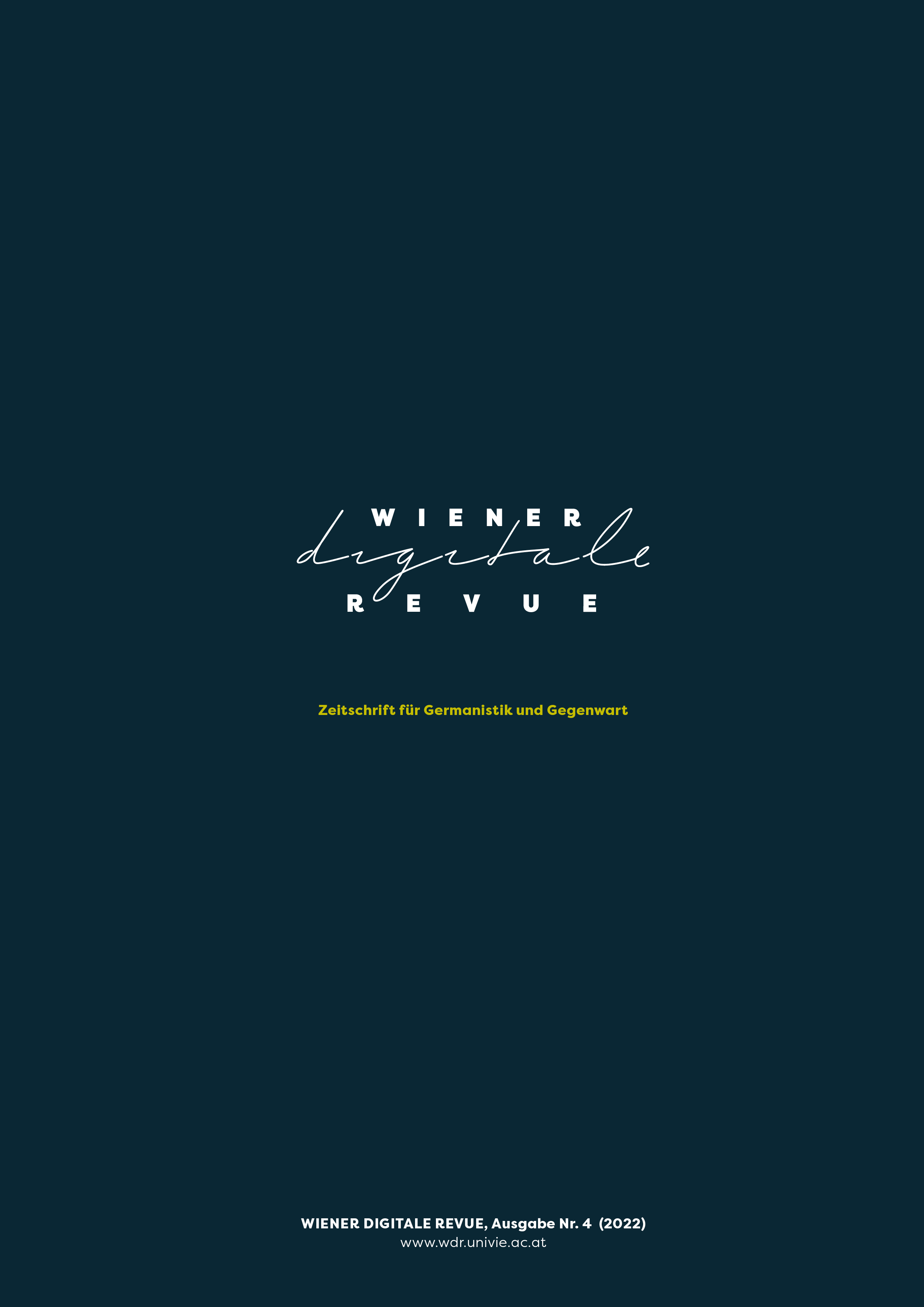Mapping Austrofascism and Beyond
Report on the Digital Research Project ‘Campus Medius’
DOI:
https://doi.org/10.25365/wdr-04-03-03Schlagworte:
digital mapping, cartography, mediality, media experience, Vienna, 1933, Austrofascism, Turks Deliverance Celebration, dispositif, actor-networkAbstract
In this article, Simon Ganahl elaborates on the development of the project Campus Medius from a historical case study to a mapping platform. The first chapter presents the initial version of campusmedius.net, an interactive map with a timeline displaying fifteen events within twenty-four hours in Vienna on the weekend of May 13 and 14, 1933. The second part discusses the current version of the website that additionally focuses on the main event of this exemplary time-space or chronotope: an Austrofascist ‘Turks Deliverance Celebration’ (Türkenbefreiungsfeier) in the gardens of Schönbrunn Palace, which is imparted from a bird’s-eye perspective, panoramically, and in street view by five mediators each. The following chapter deals with the technological infrastructure and the data model of Campus Medius, which operationalizes the theoretical concepts of the dispositif and the actor-network. In conclusion, Simon Ganahl outlines the plans to establish a digital platform for describing and visualizing media experiences in everyday life.
In diesem Artikel erläutert Simon Ganahl die Entwicklung des Projekts Campus Medius von einer historischen Fallstudie zur Mapping-Plattform. Der erste Abschnitt präsentiert die ursprüngliche Version von campusmedius.net, eine interaktive Karte mit Zeitleiste, die fünfzehn Ereignisse innerhalb von 24 Stunden am Wochenende des 13. und 14. Mai 1933 in Wien darstellt. Der zweite Teil beleuchtet die aktuelle Projektversion, die zusätzlich auf das Hauptereignis dieses beispielhaften Zeit-Raums bzw. Chronotopos fokussiert: eine austrofaschistische ,Türkenbefreiungsfeier‘ im Schlosspark Schönbrunn, die aus der Vogelschau, im Panorama und in der Straßenansicht anhand von je fünf Mediatoren vermittelt wird. Der folgende Abschnitt behandelt die technische Infrastruktur sowie das Datenmodell von Campus Medius, das die theoretischen Konzepte des Dispositivs und des Akteur-Netzwerks operationalisiert. Abschließend skizziert Simon Ganahl die Pläne zum Aufbau einer digitalen Plattform, wo alltägliche Medienerfahrungen beschrieben und visualisiert werden können.





